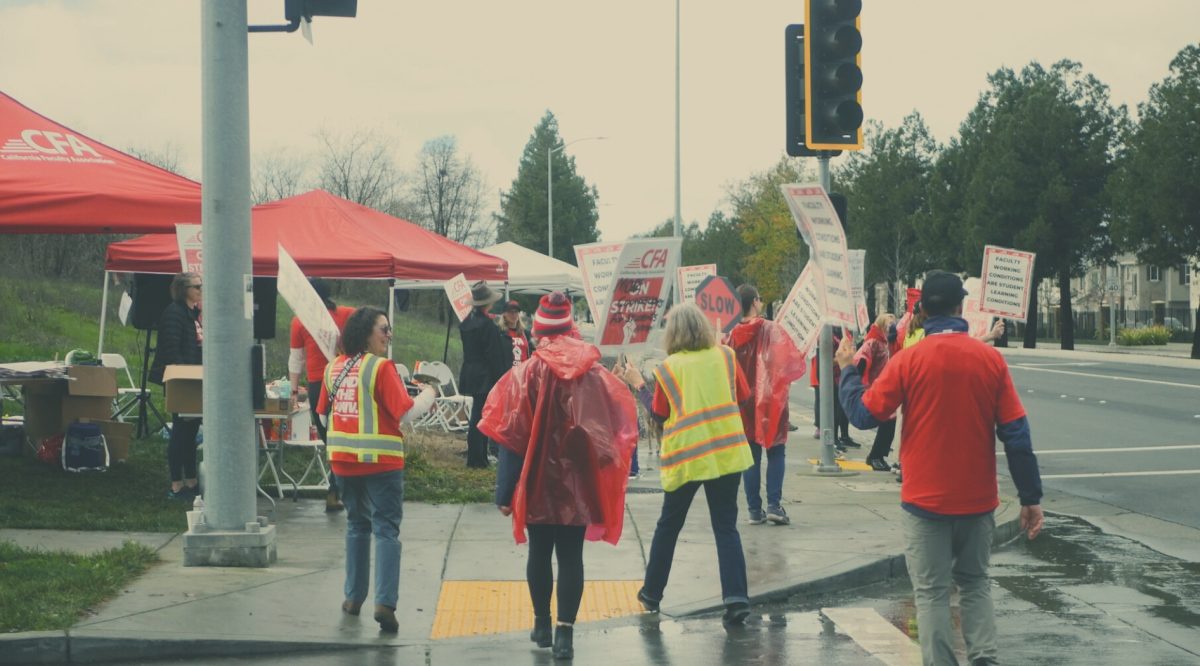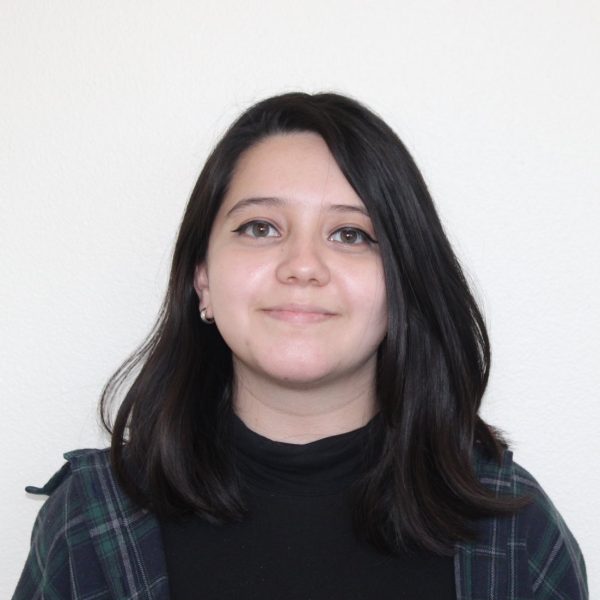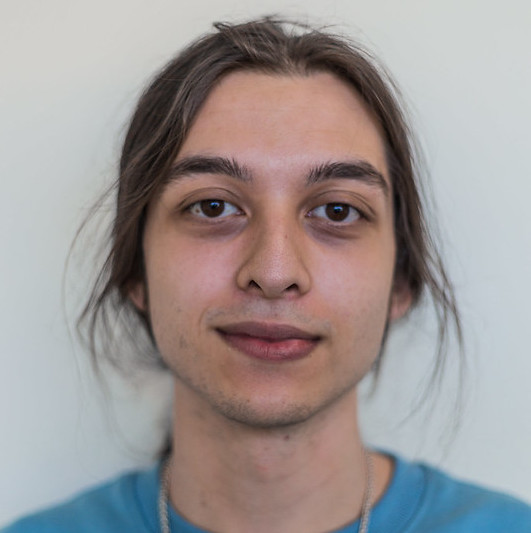For many students and faculty, Monday, Jan. 22 was supposed to mark the beginning of the spring semester. Instead, the California Faculty Association held a day of striking to call for demands such as pay equity and raising the floor for lowest-paid faculty, manageable workloads, and additional counselors for students. All 23 CSU campuses had faculty participating in the strike which marks it as the largest faculty strike at a university system in history.
The strike began and ended later that day when the CFA announced it had reached a tentative agreement.
These agreements include a 5 percent general salary increase for all faculty hired prior to July 1, 2023 , a 5 percent general salary increase for all faculty beginning July 1, 2024, an increased pay in parental leave from six to 10 weeks, raising the salary floor for lowest paid faculty members with a $3,000 increase in the minimum pay, and more.
“Imagine having to tell your students that it’s better to become a high school teacher than an English composition professor in college. I’ve had to do that many, many times,” said Chingling Wo, an English professor. “There has been a significant reduction of faculty members since the pandemic. Faculty members have witnessed their colleagues go on early retirement without replacement hire, we are seeing lecturers, faculty and junior faculty members not being able to make wages not compatible with the rising housing and living expenses in the area.”
Napoleon Reyes, a criminology and criminal justice professor, and Sakina Bryant, a faculty director at the Writing Center said that most professors have to teach three to four classes to make a decent income.
“I’m still renting and I’ve been here for more than 10 years,” said Reyes, who lives in Sonoma County. “You can imagine most students have this assumption that professors are making tons of money. That’s not true. On average, a full-time lecturer in the CSU makes around $54,000. Most of our lecturers are teaching part-time and they don’t qualify to receive benefits; their income is almost $27,000 a year,” he said.
Sakina Bryant and Emily Accosta Lewis said that they were disappointed with the statement released by SSU President Mike Lee that included a link for students to report canceled classes and the professor teaching that course. Bryant said that there needs to be unity between faculty and students.
“I have openly been against the 34 percent tuition increase. We have each other’s backs. Why would [the administration] want students to narc on us? It doesn’t make sense and it’s not fair to put them in that position. I would respect that [students] don’t know all the details,” Bryant said.
Accosta Lewis, a faculty advisor for Primitivo, a public relations course, and a communications professor, said that it was dangerous for the administration to pit students and faculty against each other.
“Generally we’ve heard support from students, I do think that no professor wants this to impact any graduation or [students’]learning experiences. What I think this will do is cut out wiggle room in a class, and most classes will have wiggle room. Nobody wants this to hinder any classes,” Acosta Lewis said.
Other professors, such as Martha Byrne, a math education professor, and Jennifer Mahdavi, a professor for SSU’s school of education, said that the lack of mental health counselors on campus is a concerning issue as well. Byrne said that since the spring of 2020, the faculty has been straining and sacrificing to support their students. “We don’t have enough mental health counselors on our campus, so I’m fielding student concerns about mental health. The students can’t get the kind of support they need from a mathematician/math educator, and I cannot provide that support without it taking away from my teaching, research, and service,” said Byrne. The CFA website states that one of the demands of the CFA is, “More counselors to improve students’ much needed access to mental health counseling.” The number of counselors demanded is one counselor for every 1,000 to 1,500 students.
Mahdavi said, “It’s like Pavlov’s pyramid of needs. Basic needs for food, shelter, and health. If faculty are struggling to pay their rent, and if students aren’t getting the mental health services they deserve, how are we going to be at our best? We need basic dignities.” Mahdavi has been teaching at a college level for 23 years. Before coming to Sonoma State, she was an elementary school teacher for 10 years. “If I remained an elementary teacher, I probably would be making $15,000 more than I am now. But all educators in general need to be paid money that reflects the importance of the job that we do,” said Mahdavi.
Reyes said, “I cannot effectively advise and help my students if I’m teaching 100 to 150 students. We also want staffing of mental health counselors. We don’t even have tenured counselors at Sonoma State.”
Farid Farahmand, an engineering professor, said that regulating classroom sizes is essential for instructors. “I think it’s really critical that students, when they graduate, have the highest level of education that they can potentially receive and that all starts with our faculty. It’s very hard to attract anyone to this area to teach our students. In the end, it’s the students that suffer,” Farahmand said.
Napoleon Reyes said that although the terms of the Tentative Agreement (TA) may “not be perfect,” they are working to improve conditions for faculty and strengthen learning conditions for students. “I am aware that the TA does not satisfy all our original demands, but it is a strong move forward. If approved, it would yield real and tangible benefits to members, including significant raises to the salary floor for our lowest paid faculty,” said Reyes.
Farahmand said he is optimistic that another strike can be avoided and has been prioritizing classroom stability. He added that it was crucial that the final settlement fairly compensates all CSU faculty, taking into account the rising cost of living, and ensures a supportive and caring campus environment for all stakeholders. “If we aim to attract future faculty, it is essential to provide a competitive environment based on pay, workload, and compensation. Ultimately, our students will also benefit from these improvements,” Farahmand said.
“If faculty vote to ratify the agreement, and I hope we do, there shouldn’t be another strike soon,” Mahdavi said. “We haven’t had a full 23 campus walk-out like that in all of the 20 plus years I’ve worked in the CSU. It’s a slogan that CFA uses a lot, but we really mean it: we don’t want to strike, but we will.”
After hearing feedback from SSU faculty, the CFA Sonoma Chapter Executive Board passed by a unanimous vote resolution endorsing the Tentative Agreement.
According to the document released by the Sonoma Chapter Executive Board, “Therefore, be it resolved that we, the Executive Board of the Sonoma State Chapter of the California Faculty Association, endorse the Tentative Agreement and recommend to members that they vote “yes” to ratify the same; and resolved that in the future we will continue to champion even more advances to working conditions and equity for all members of our community.”
Although Mahdavi said that she was “astonished” and “pleased” that a tentative agreement was reached, she wished there was a “more definite language and a clearer pathway” toward hiring enough counselors.
“For now, I’ll continue to do my best to support all of my students’ mental health. Certainly many of them have significant need for help. What I can do will never be enough, though, because I’m not a professional counselor. The current situation is not tenable for any of us. I hope for better support for all students in the future,” Mahdavi said.
Though faculty did not receive everything they wanted, she acknowledges that there was progress on raising the floor for the lowest paid lecturers and providing more paid family leave to parents.





![[Both photos courtesy of sonoma.edu]
Ming-Ting Mike Lee stepped in as the new SSU president following Sakakis resignation in July 2022](https://sonomastatestar.com/wp-content/uploads/2024/04/CC4520AB-22A7-41B2-9F6F-2A2D5F76A28C-1200x1200.jpeg)





























